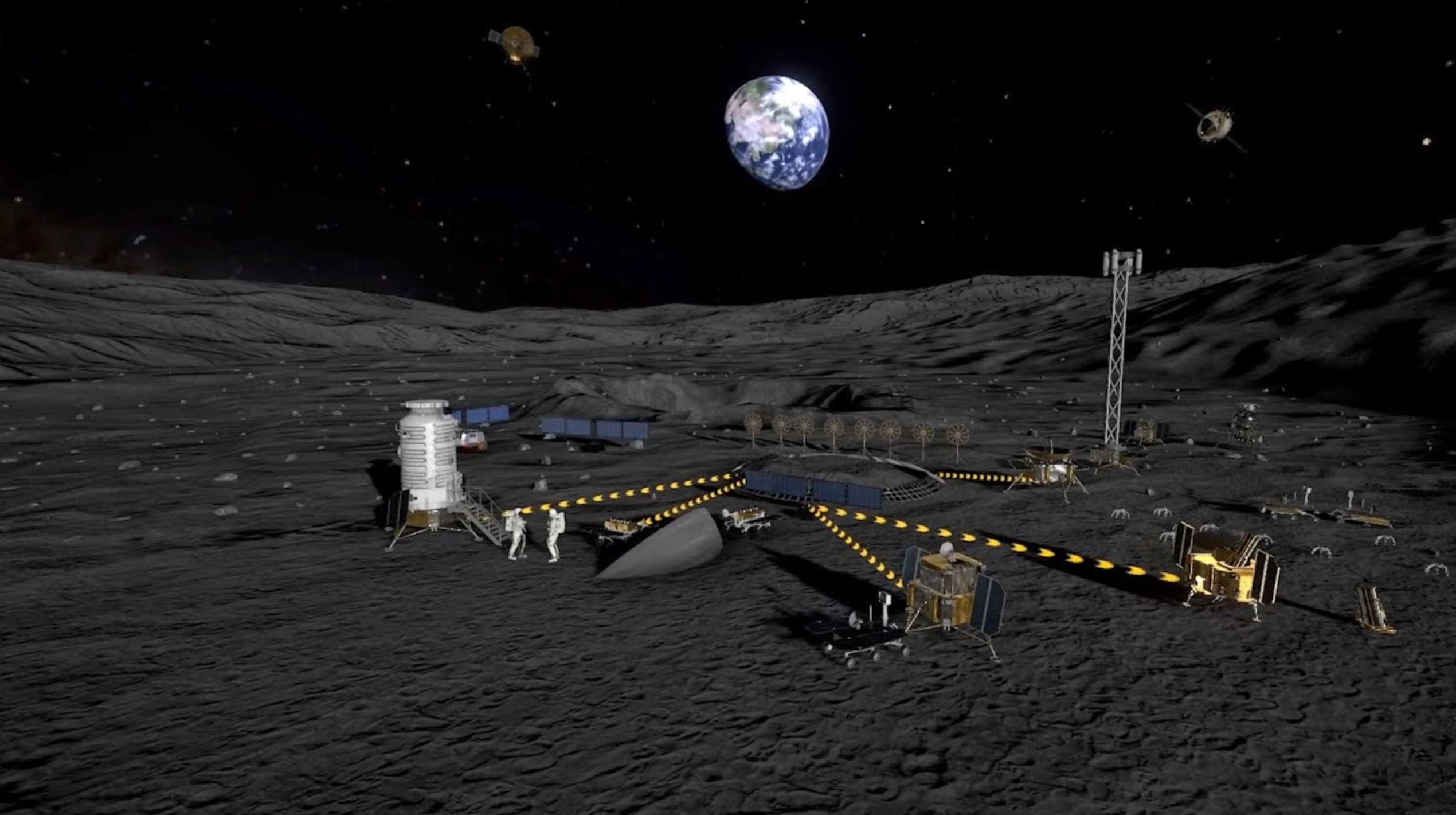
HELSINKI — China has added a United Arab Emirates’ university to its list of partners for the country’s moon base ambitions.
A Memorandum of Understanding between the Deep Space Exploration Laboratory (DSEL) and the University of Sharjah (UoS), United Arab Emirates (UAE), on cooperation on the International Lunar Research Station (ILRS) was signed Nov. 14, DSEL announced Sunday.
Wang Zhongmin, director of DSEL’s International Cooperation Center, and UoS Chancellor Hamid Majoul Al Nuaimi represented their respective parties at an MoU signing ceremony. The ceremony took place before the start of the 14th Arabic Conference of the Arab Union for Astronomy and Space Sciences at the UoS.
The agreement between the two parties focuses on collaboration and providing an international platform for implementing, operating and utilizing the ILRS, according to Sharjah 24.
Cooperation will include the interchange of scientific and technological experiments, data exchange and analysis, teaching and training, and the development of space exploration capabilities. The UoS was established in 2015. The University’s Sharjah Academy For Astronomy, Space Sciences and Technology (SAASST) has a number of laboratories including a cubesat facility.
The China-led ILRS envisions constructing a permanent lunar base in the 2030s, with precursor missions in the 2020s. The initiative is seen as a China-led, parallel project and potential competitor to the NASA-led Artemis Program.
China has established an organization, named ILRSCO, in the city of Hefei in Anhui province to coordinate the initiative. The U.S. meanwhile is attracting countries to sign to the Artemis Accords, which outlines principles for cooperation in space exploration, and underpins NASA’s Artemis lunar exploration campaign. Bulgaria became the 32nd country to sign up Nov. 9.
The UAE’s position on ILRS is not clear. The country signed up to the Accords in October 2020. Wu Weiren, now head of DSEL, is reported by Chinese media to have stated earlier that the UAE had signed up to the ILRS. However no official announcement of such an agreement has been made. The UoS agreement provides an avenue for a level of cooperation.
The UAE’s MBR Space Center signed an agreement with China in September 2022 to fly a small rover on the Chang’e-7 lunar south pole mission in 2026. This includes an MoU to collaborate on future moon missions, but did not include a statement on ILRS.
The rover plan however, apparently to be based on the Rashid rover lost aboard ispace’s Hakuto-R Mission 1 lander, fell foul of the U.S. government’s International Traffic in Arms Regulations (ITAR), according to a report from the South China Morning Post. The report cited anonymous sources.
China issued an announcement of opportunity for payloads to fly on Chang’e-7 in September 2022. A total of 15 kilograms of payload mass was available aboard the orbiter and 10 kg on the mission lander. The deadline for letters of intent was Feb. 1, 2023, with proposals to be submitted in June. An expert review of proposals was expected to be completed in July this year. Signature of implementation agreements is to follow at an unspecified date.
The European Space Agency and European countries are involved in upcoming Chang’e moon missions. This cooperation remains at the payload rather than programmatic level, however.
| ILRS signatory | Type |
|---|---|
| China | Country |
| Belarus | Country |
| Pakistan | Country |
| Azerbaijan | Country |
| Russia | Country |
| Venezuela | Country |
| South Africa | Country |
| Asia-Pacific Space Cooperation Organization (APSCO) | Inter-governmental Organization |
| nanoSPACE AG (Switzerland) | Firm |
| International Lunar Observatory Association (ILOA, Hawaii) | Organization |
| National Astronomical Research Institute of Thailand (NARIT) | Institute |
| University of Sharjah (UAE) | University |
China is however apparently keen to build partnerships with Arabian Gulf nations. This includes Origin Space, a Shenzhen-based space resource utilization firm, establishing facilities within the China-UAE Industrial Capacity Cooperation Demonstration Zone.
DSEL operates under the China National Space Administration (CNSA). DSEL stated earlier this year that China aims to complete the agreements with founding members of ILRS by October. No statement on founding members has so far been made.
China aims to land astronauts on the moon before 2030 as part of its lunar plans. Meanwhile the U.S. intends to land crew at the lunar south pole before this with Artemis 3.
Distinct U.S. and China-led moon programs have emerged at a time of growing geopolitical tension between the pair. This context could see the potential development of discrete international space industry ecosystems.
